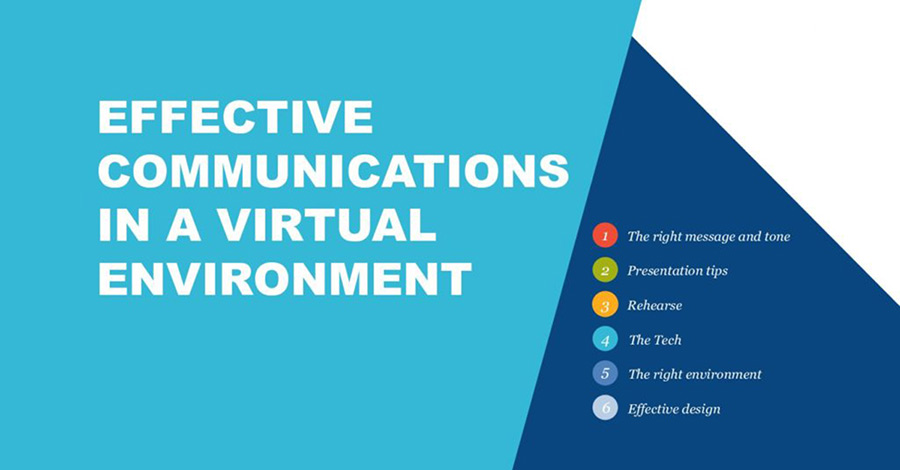Effective Communications in a Virtual Environment
Tips for how to get your message across while employees, customers and partners work through the COVID-19 pandemic
Against the background of the global COVID-19 pandemic, all communicators understand the need for clear, concise, consistent communications. This is critical with all audiences, be it employees, customers, partners or third parties. There is a need to keep people informed, to reassure, to mitigate and to ensure audiences understand the plan and can keep a level head.
But getting the message across in the traditional way is being disrupted as much as our everyday lives. Many companies are already encouraging workers to stay home, significantly impacting team collaboration and communication. Restrictions on travel are stopping team meetings from taking place. And fears of contagion have seen the cancellation, postponement or virtualisation of annual events and conferences.
In this environment, many companies are turning to virtual solutions to communicate with their audiences.
But producing a perfect virtual event or meeting – and ensuring that your audience receives and understands the intended message – is quite simply not the same as producing a perfect face-to-face session.
Here is some practical advice to help deliver the most polished and engaging experience when it comes to presenting virtually, so that you can be sure your message gets through.
The Right Message and Tone
Your staff, customers and partners are all currently worried, concerned and confused. Getting the tone of your message right is incredibly important. Virtual meetings are not the same as in-person meetings: attention spans are shorter, distractions abound and people simply don’t stay on virtual platforms for hours at a time. It’s therefore more critical than ever for your messaging to be succinct, easily digestible, audience-centric, engaging and presented in a compelling, compassionate and considerate manner.
Think about the message and the tone
Develop your speaking notes and messaging in the context of the current COVID-19 outbreak and how people are feeling emotionally. Check for appropriate language and sensitivity to global teams and colleagues.
Reduce the narrative to only the most essential information so that the core message gets across. Communicate the most important points within the first 5-10 minutes, before you lose peoples’ attention spans. Then make sure your conclusion repeats the most important message you wanted to convey.
Timing is everything
People don’t sit in virtual meetings for hours. Try to plan your session for no more than 30-45 minutes maximum. Do not include ‘surround-sound’ content and narratives. Get to the point quickly, and only include the most important elements.
If possible, presenters physically present
If you have numerous presenters, trying to ‘dial’ in speakers separately will result in a disjointed and unconvincing presentation. Getting at least a couple of presenters in the room together will greatly ease the natural flow of conversation and ensure a more authentic and digestible experience for the audience.
That said, given the COVID-19 environment, this will likely not be possible. In this instance, limit the number of presenters to 2-3 speakers. One person should clearly facilitate and host to make the message as easy to understand as possible.
Learn from the evening news
Think about the dynamics of the presentation and narrative. Having a call host or moderator will keep the content compelling and fresh. A good tip is to think of a virtual meeting as a live TV news broadcast. Different voices and perspectives can boost the content and get the message across more effectively, as long as you’re not jumping around too much. Think 3-4 minutes per person as a winning formula.
In contrast to the evening news, however, avoid video content as a presentation support, given its propensity to lag in virtual formats.
In communications, repetition is key
During the virtual meeting, underscore the most important messages with very clear visual cues, and repeat them for clarity at the end.
But that’s not the only place to get the message across. When inviting people to attend, be clear on the topic and what is going to be communicated. Then follow up with a short recap that highlights the main takeaway.
Please refer to our PDF for more practical advice to help deliver the most polished and engaging experience when it comes to presenting virtually, so that you can be sure your message gets through. The Effective Communications in a Virtual Environment document includes recommendations on presentation techniques in a virtual environment; how to rehearse to get the best out of the meeting; tips on using the tech to best advantage; making sure the presenter’s environment and back- and fore-ground are conducive to getting the message across; and making the associated content as compelling as possible.

